Key takeaways:
- Upcycling furniture creatively transforms discarded pieces, adding personal stories and enhancing home aesthetics.
- Significant benefits include environmental sustainability, cost savings, and the creation of unique, conversation-starting items.
- Essential tools for upcycling include a sander, paint sprayer, and basic hardware tools, which streamline the process and improve results.
- Choosing the right pieces involves assessing their condition, ensuring proper size for your space, and considering their future functionality.
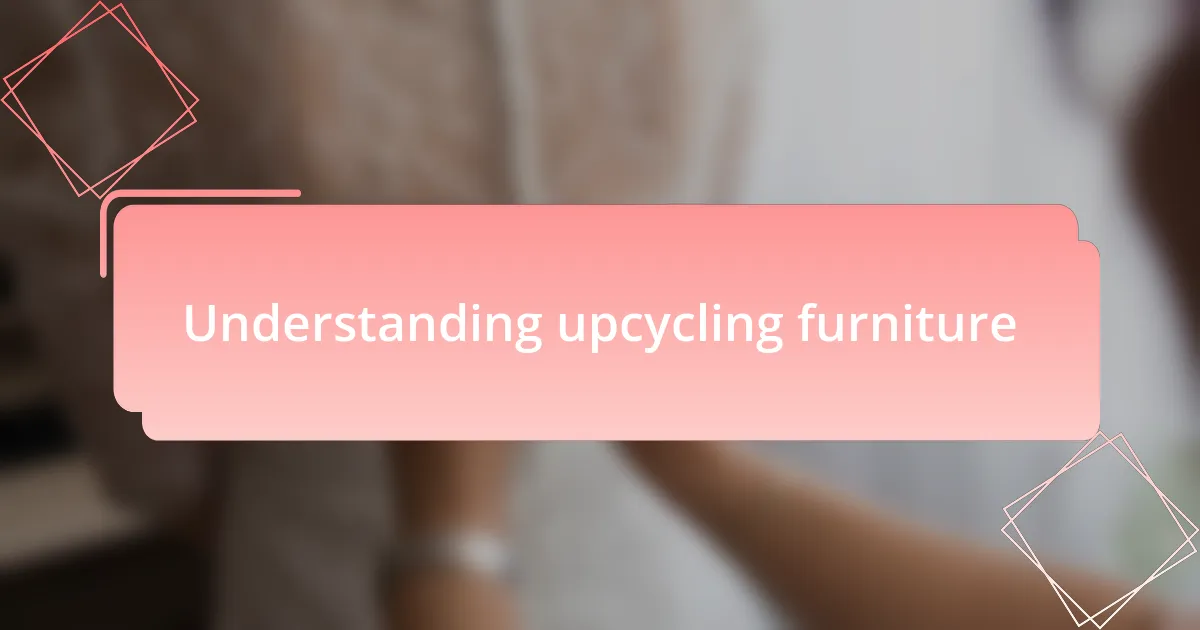
Understanding upcycling furniture
Upcycling furniture is more than just a trend; it’s a creative way to breathe new life into pieces that might otherwise be discarded. I remember the thrill of transforming an old, scratched dining table into a vibrant centerpiece for my kitchen. Could there be anything more satisfying than repurposing something with history?
The beauty of upcycling lies in its potential to tell a story, blending the old with the new in a way that resonates on a personal level. Have you ever looked at a worn-out chair and wondered about its past? Each scratch and dent can become a part of its renewed identity, reflecting not just your creativity but also its journey.
When I first ventured into furniture upcycling, I was nervous about making mistakes, but each project taught me something valuable. I forged connections with my furniture, and it became an extension of my home and personality. Isn’t it amazing how transforming a piece can transform how we feel in our spaces?
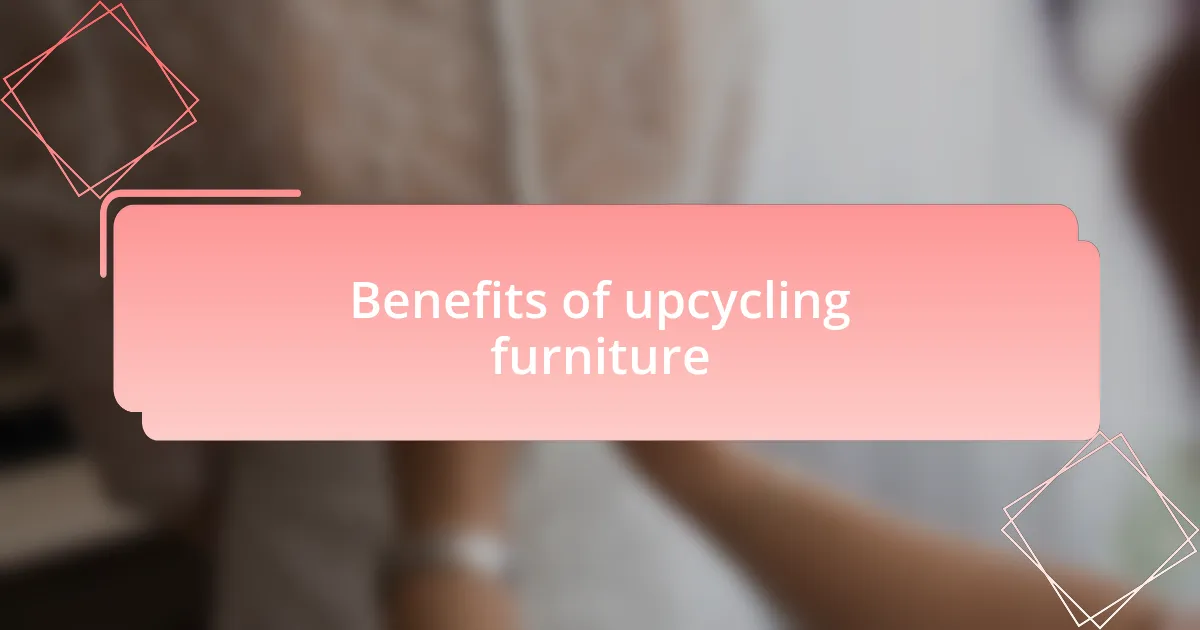
Benefits of upcycling furniture
Upcycling furniture offers significant environmental benefits as it reduces landfill waste and conserves resources. I remember the time I rescued an old bookshelf destined for the dump; by giving it a fresh coat of paint and some new hardware, I not only created a unique piece for my living room but also contributed to a more sustainable planet. Isn’t it rewarding to know that your creativity can help lessen the environmental impact?
Another profound benefit of upcycling is the chance to save money while getting exactly what you want. I’ve turned several thrift store finds into designer-inspired pieces that would have cost a fortune if bought new. How fulfilling is it to have beautiful furniture that showcases your personal taste without breaking the bank?
Moreover, each upcycled piece carries its own story, enriching your home’s character. I’ve found that my living space feels more intimate and personal when filled with items that I’ve transformed myself. Isn’t it the personal touch that makes a house feel like a home? Each upcycled item invites conversations and connects me with guests, fostering a sense of community and shared history.
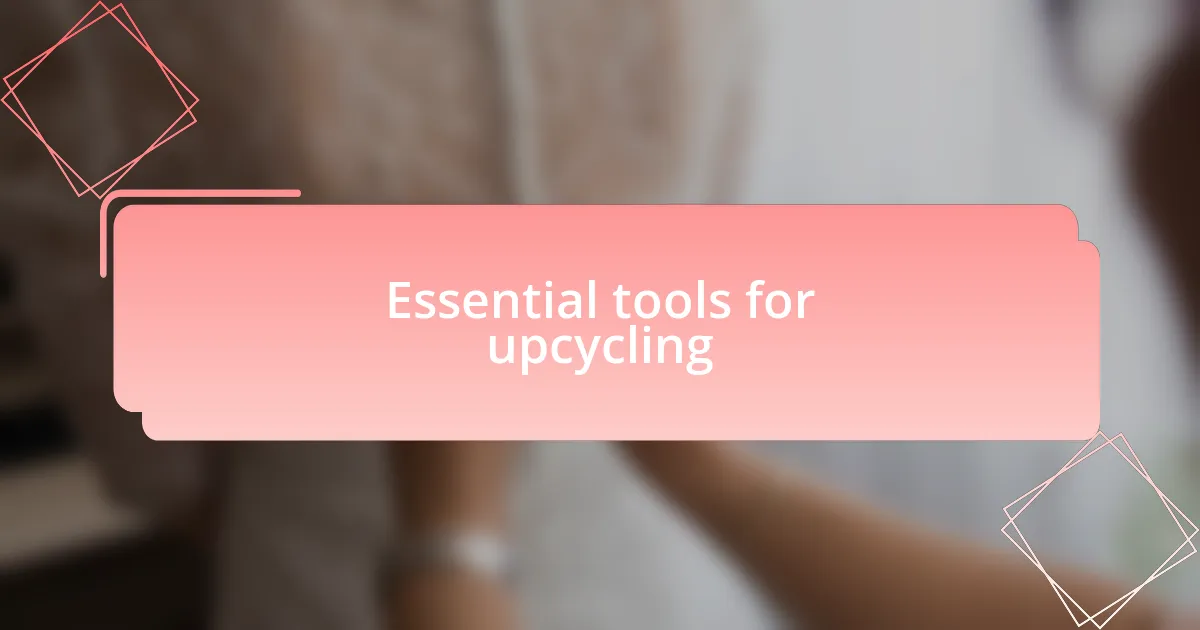
Essential tools for upcycling
When it comes to upcycling furniture, having the right tools can make all the difference. A good quality sander is essential for smoothing rough surfaces and removing old paint or finishes. I remember the first time I switched from a manual sanding block to a powered sander; it cut my prep time in half and left my projects looking polished and professional. Have you ever struggled with getting the perfect finish? Trust me, investing in the right equipment simplifies the process.
Another must-have is a paint sprayer, especially for larger pieces like cabinets or dressers. I was amazed at how quickly I could cover an entire surface with a sprayer compared to traditional brushes or rollers. It also allowed me to achieve a smooth, even coat—no more worrying about brush strokes ruining my hard work! Don’t you think saving time and ensuring a flawless finish is worth the initial learning curve?
Lastly, a sturdy set of tools for hardware replacements—such as screwdrivers, pliers, and various drill bits—enables you to customize and upgrade your furniture. I recall transforming a plain old chair simply by swapping out its downtrodden legs for something more stylish. It was a small change with a substantial impact. What’s stopping you from making those little adjustments that can elevate your creations? Each tool plays a crucial role in bringing your vision to life.
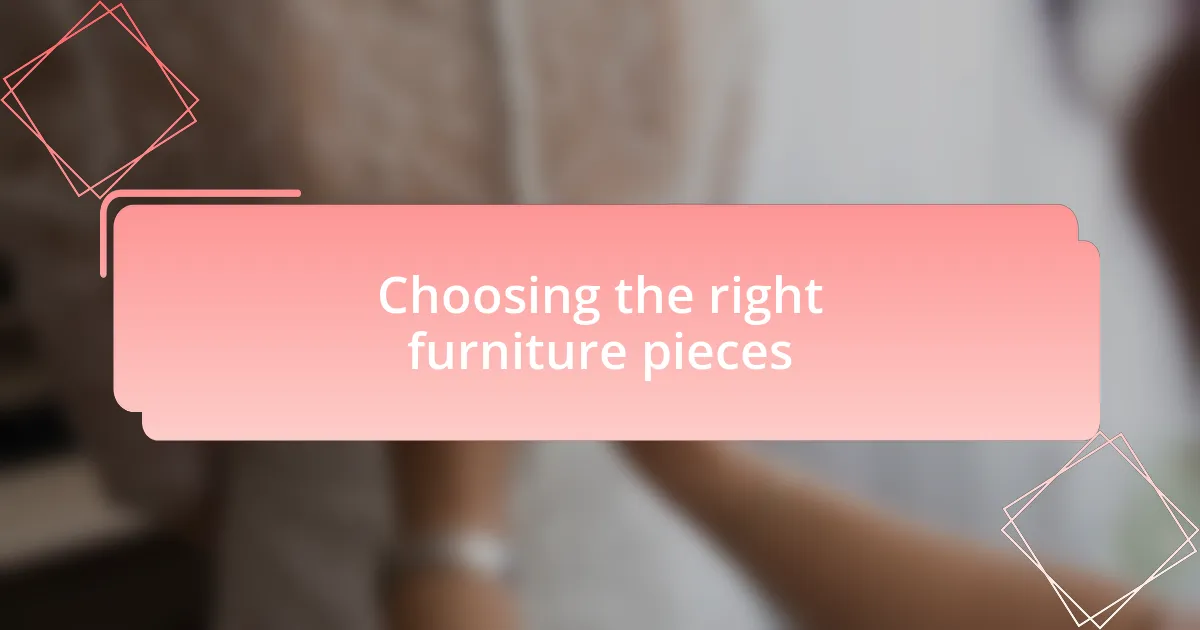
Choosing the right furniture pieces
When selecting the right furniture pieces for upcycling, it’s vital to consider the item’s condition and construction. I once stumbled upon a vintage dresser at a thrift store. While it had seen better days, the solid wood frame gave me hope that it could be transformed into a stunning focal point. How often have you passed up a piece that seemed too damaged? But remember, a little creativity can work wonders on what seems like a lost cause.
Another critical factor is the size and scale of the furniture in relation to your space. I once brought home a large buffet table only to realize it completely dwarfed my dining area. It taught me the hard way that measurements matter. Taking the time to measure your intended area and the furniture you’re considering can save you from heartache and wasted effort.
Finally, think about how you’ll use the piece after upcycling. I found an old coffee table that I envisioned as a cozy reading nook centerpiece. But it’s essential to think through its practicality—will it fit into your lifestyle? Consider the piece’s function and how it aligns with your vision; this not only ensures a successful project but also provides you with a functional, stylish addition to your home. Wouldn’t it be great if every upcycled piece you created felt like it belonged in your life?
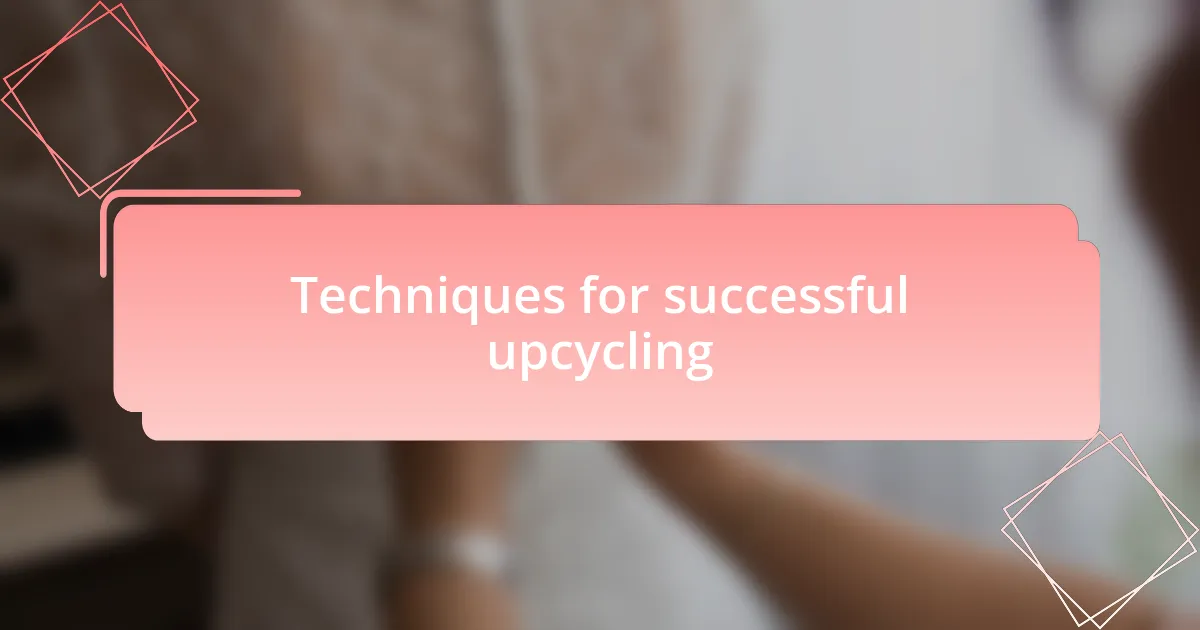
Techniques for successful upcycling
When embarking on an upcycling adventure, preparation is key. I always find myself drafting a plan before diving in. Whether it’s sketching design ideas or listing the supplies I need, having a clear vision saves me from stumbling mid-project. Ever experienced that moment of panic when you realize you’ve forgotten an essential material? Trust me, planning ahead can keep those stress levels down.
Choosing the right techniques can make a world of difference in the final outcome. For instance, I discovered that distressing a piece gives it character but requires a practiced hand to avoid overdoing it. When I first tried it on a chair, I ended up with a look that was more ‘damaged’ than ‘charming.’ Now, I focus on subtle distressing with sandpaper, allowing the piece’s natural beauty to shine through while still giving it a refreshingly aged vibe.
Finally, embracing color is one of the most transformative techniques in upcycling. I once painted an old bookshelf a vibrant teal, and it became the highlight of my living room. Colors breathe new life into outdated pieces, inviting personality into any space. Have you ever noticed how a simple paint job can evoke a feeling or even change a room’s mood? Being bold with color can lead to unexpected satisfaction, turning what once was a dull object into a statement piece in your home.